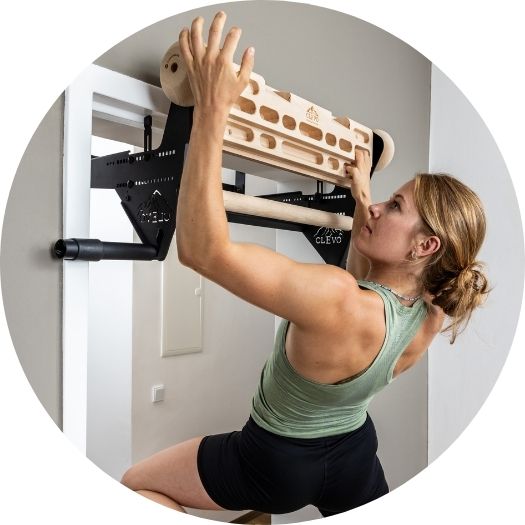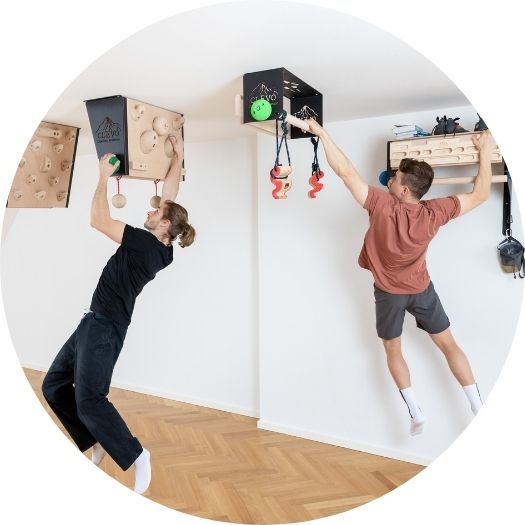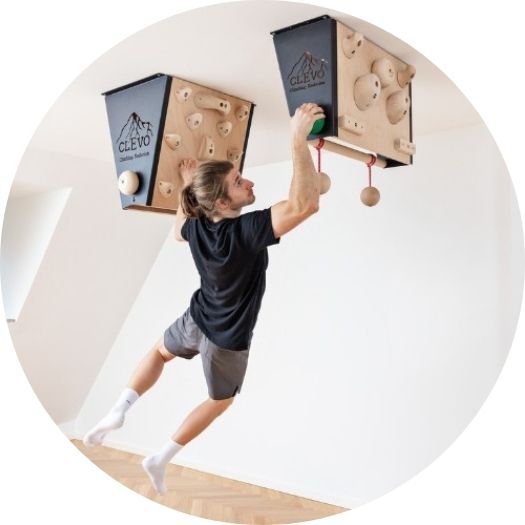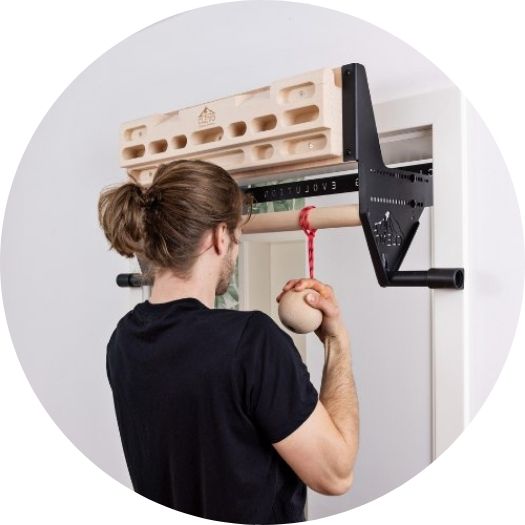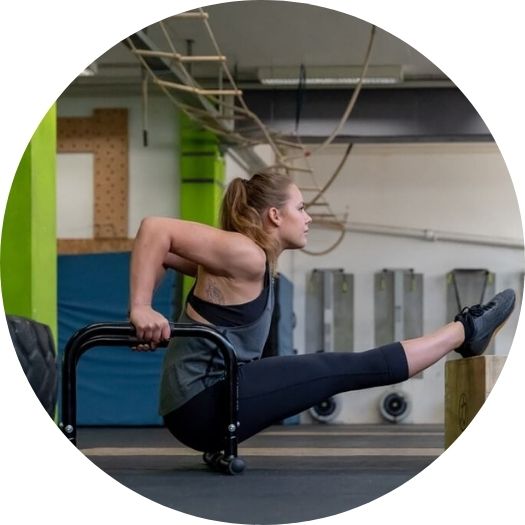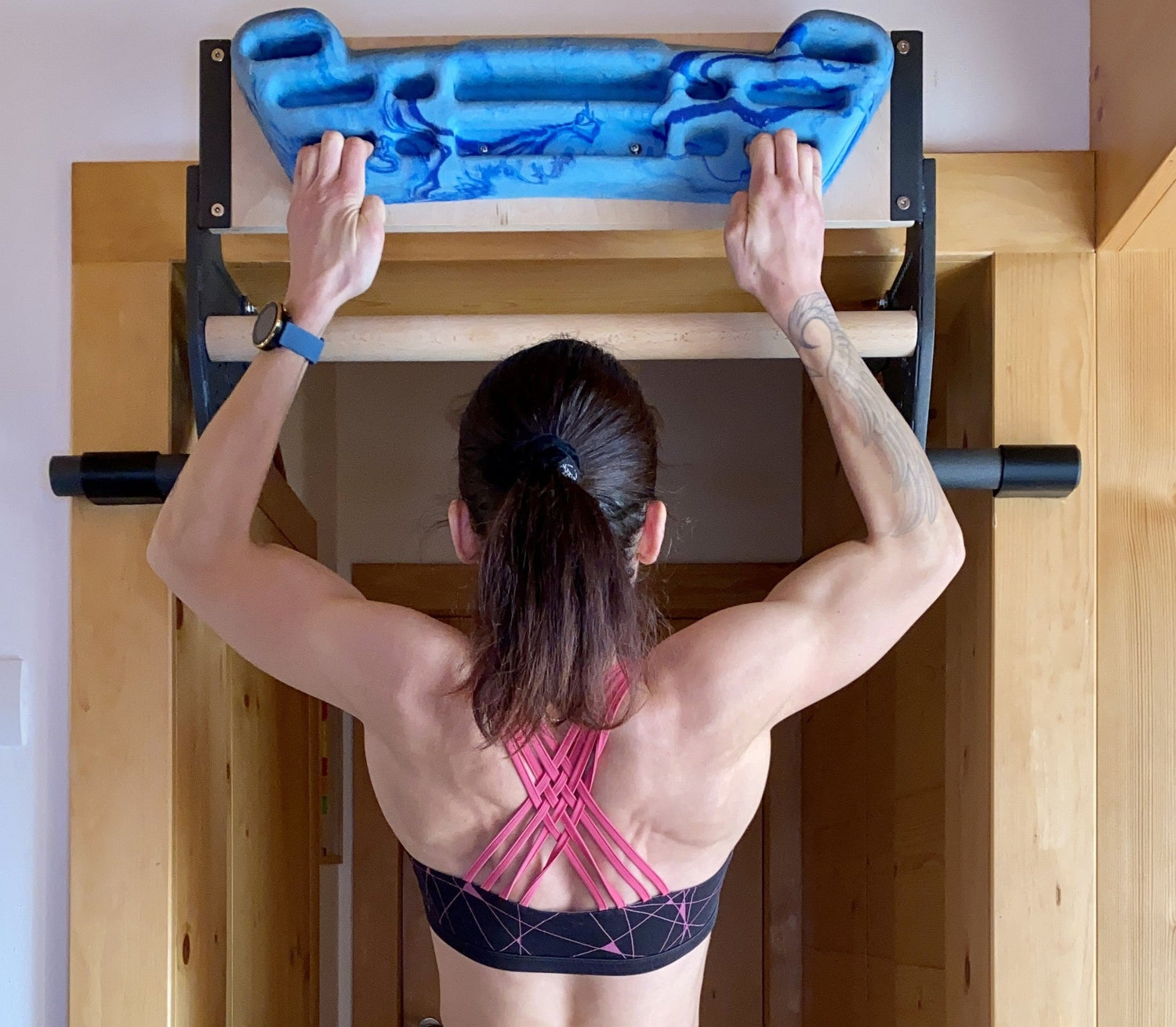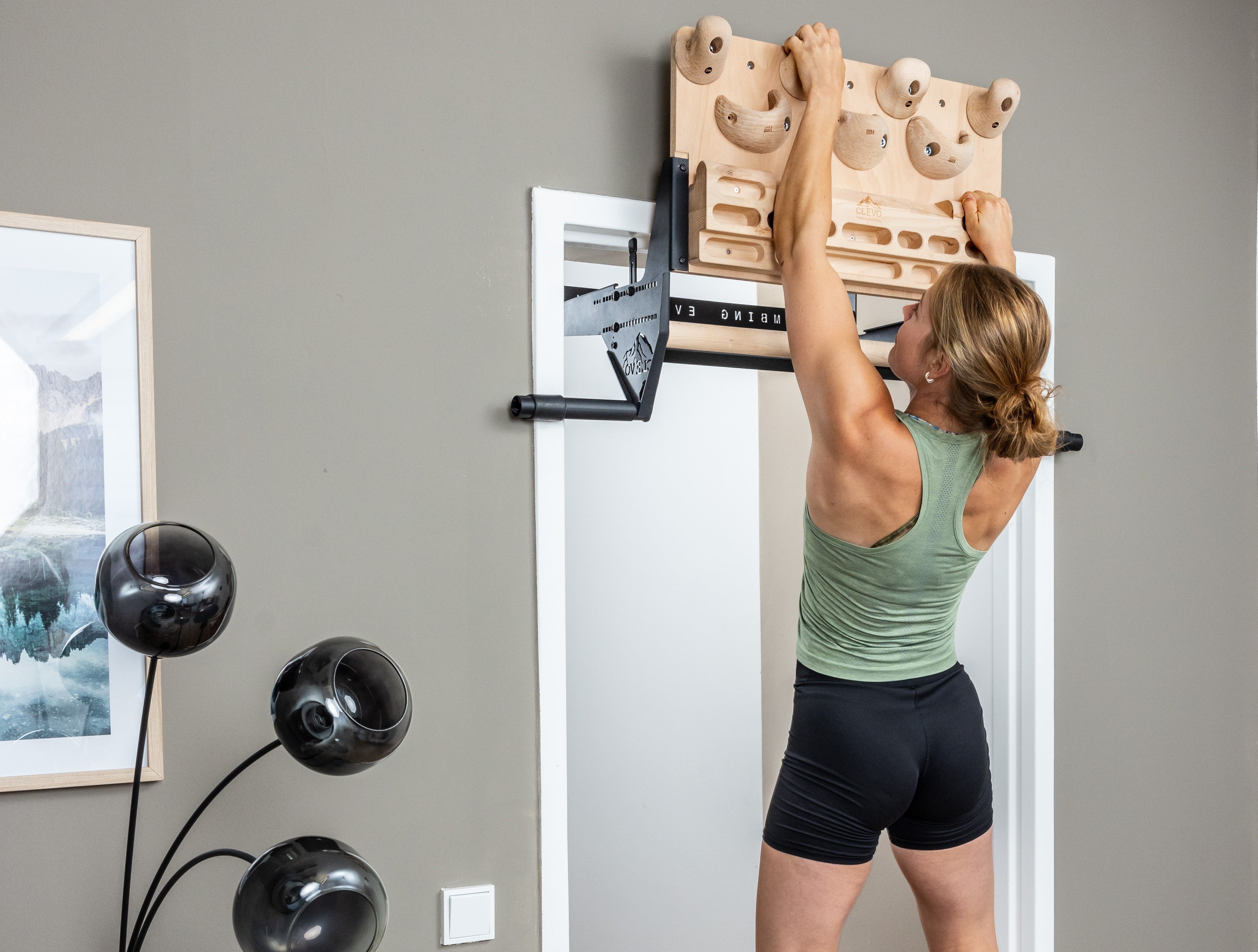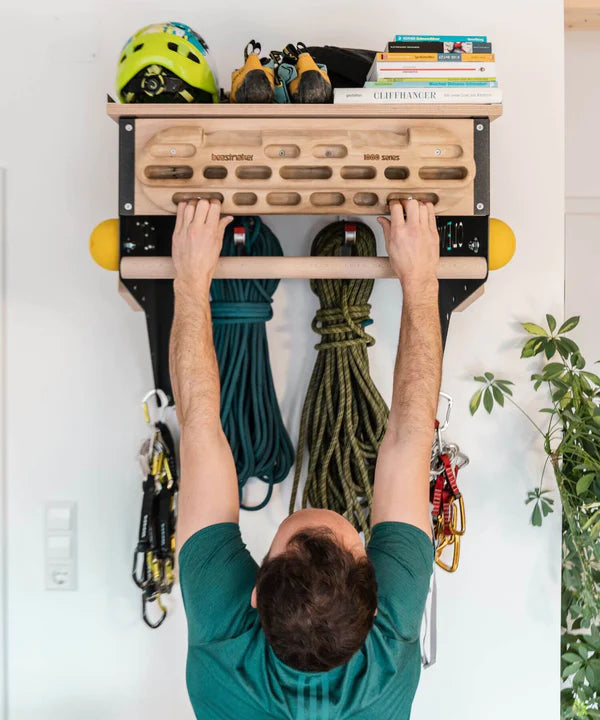The Hangboard takes up little space, but gives you an even greater training effect. With the hangboard, you train your finger strength incredibly efficiently and thus develop your skills for bouldering and climbing. With all its advantages, the hangboard is flexible in use: You have several options to mount the hangboard and start training at home. We'll introduce you to the four most popular methods for mounting your hangboard!
Short basics: What the hangboard is and why it boosts your climbing training!
There is hardly any accessory for your climbing training at home that is as efficient for finger training as the hangboard. 🔥 This is a bit surprising when you consider how simple the hangboard is designed to be. In fact, the Hangboard is nothing more than a wooden board with holes in it for grip. But let me tell you one thing: The few grip surfaces in the Hangboard are really something!
- Some of the grip surfaces are so small that you can only hold on to the board with the tips of two fingers.
- On other grip surfaces you may have room for all your fingers, but you may only be able to grip with half of your fingertips.
- Don't worry, sport lover: there are also a few lighter grip surfaces where you can find a much easier hold to warm up relaxed at first.
No matter how we spin it, the hangboard with its different grip surfaces allows for varied finger training that will help you expand your climbing and bouldering skills. You certainly know how important it is to have plenty of strength in each fingertip on some routes. So you can also conclude why the hangboard is a good training tool.
Because it takes up so little space, but brings an enormous training effect, many climbers and boulderers acquire a hangboard for training at home. Then the only question is how they should mount the hangboard. There are several methods, from attaching it with a rope to screwing it to individual modules. Pick your favorite from the following paragraphs.
Hangboard mounting #1: Attach to the rope and be mobile

With a rope mounted hangboard you are absolutely mobile. You decide whether you tie your hangboard to a sturdy branch in the next park or whether you let your hangboard hang from a hook screwed into the ceiling at home. The flexible options in use and assembly have earned this hangboard the name "mobile hangboard".
The mobile hangboard is usually sold with the rope for attachment. Because the lower end of the rope is already attached to the hangboard, you don't have to do anything other than attach the upper end of the rope to a branch, hoe, or other sturdy mounting point - and your workout can begin.
Apart from the fact that a mobile hangboard is easy to assemble, it adds a special component to your finger training: Hanging from the rope, the hangboard is not completely fixed. It moves on the rope, which means that you have to apply some body tension to avoid swinging back and forth during training.
Ultimately, the mobile hangboard places higher demands on your bouldering and climbing workouts because you're exercising your body tension with every exercise you perform. If this sounds interesting, the mobile hangboard is the right equipment for you. With the mobile hangboard you also benefit from the lower purchase costs and - as the name already says - from the possibility to use it mobile at the place of your choice.
Especially for bouldering and climbing beginners, however, the unstable slope of the hangboard might be too demanding. It is better to take your first steps in training your finger strength on a stably mounted hangboard. This realization makes the next three mounting options interesting for you.
Hangboard mounting #2: Mobile mounting of the hangboard in the door frame

At this point we have a very special solution for you, with the help of which you can mount your hangboard: You use our door module CLEVO DOOR to mount your hangboard and, if necessary, other climbing equipment on it. With this mounting option you have several advantages:
- Your hangboard is firmly mounted on our door module and does not wobble back and forth like a mobile hangboard.
- Despite the fixed mounting of the hangboard, you can use it flexibly, because the door module can be attached to almost any door frame by simple hooking.
- In addition to the hangboard, the pull-up bar integrated in CLEVO DOOR provides you with another training option.
- You can also attach climbing equipment other than the Hangboard to CLEVO DOOR, such as climbing balls and individual climbing holds.
A more versatile training, with which you can train even more bouldering and climbing skills: This allows you CLEVO DOOR in combination with the pull-up bar, your hangboard and possibly other training accessories! Even for beginners, the training is well feasible if you decide to use CLEVO DOOR and mount the hangboard on it. In terms of mobility, you are not as flexible as with the mobile hangboard on the rope, but at least a basic flexibility is given by the screwless attachment in different door frames.
Only the higher purchase price for a hangboard and our door module could be interpreted as a valid disadvantage, but in return you get much more training possibilities. Therefore, the CLEVO DOOR module, the hangboard and other climbing accessories for training can be described as a very diversified and sensible investment. So the only question is: Are you ready to invest in training fun and sports success and get started? 🚀
Hangboard assembly #3: Build it yourself!
- Take two long beams and screw them, standing upright, onto two shorter beams.
- Stabilize the two upright beams at the bottom with two diagonal beams to ensure a secure stand.
- Connect the two upright beams at the top with a cross board large enough to hold your hangboard.
- Screw your hangboard onto the cross board.
- That's it!
If you're handy with even a little bit of screwing and sawing, you'll be fine with this building project. In the end, you have a mounting option for the hangboard that does not allow you to train on the move, but is very stable and cost-effective for stationary use.
If you train at a fixed location and set up a private training place at home, in the garage or at another location, the build your own frame mount is a good option. In the end, you should save on costs if you don't exactly pick up the beams at the hardware store, but look around at friends or find used beams online.
We think it makes more sense to install ready-made modules at home instead of building your own. The ready-made modules are safer, should last longer, and give you more training options than a frame mount that you can just mount your hangboard on.
Hangboard Installation #4: Install Ready-Made Modules

With the ready-made modules you can bring the climbing wall to your home! Take a look at our modules CLEVO WALL for wall mounting and CLEVO M base module for ceiling mounting. We don't need to beat around the bush: The modules are fixed and therefore you don't have the advantage of being able to use your hangboard in a mobile way. In addition, the modules cost you a bit more than the CLEVO DOOR module for hanging in the door frame.
Apart from these points, you have only advantages with the permanently installed modules! They give you the chance to create your own little climbing oasis at home. Even if "oasis" may sound dreamy, you can be sure: If you equip the modules correctly, things will get really tough and you'll be perfectly prepared for indoor bouldering or outdoor climbing! For this purpose, you can attach a wide variety of climbing training accessories to the wall and ceiling modules.
- Hangboard
- Campus ledges
- Climbing holds
- Balls
The pull-up bar is already integrated in both the wall and ceiling modules and is another good facet for your training. Compared to the wall module, the ceiling module has a larger surface area, so you can attach several climbing holds at once and even build a small climbing wall at home.
Conclusion: A lot is a question of your ambitions and the available space!
Hangboard assembly (variant) |
Costs & area of application |
training |
hanging mounting on the rope |
cheap; maximum mobility |
finger training for advanced users only |
fixed mounting on door module |
medium cost; mounting on almost every door frame possible |
finger training for beginners as well as advanced; also pull-ups and other exercises |
fixed mounting on self-built frame |
low cost; only at one place of use |
finger training for beginners as well as advanced users |
fixed mounting on fixed climbing module |
medium cost; only at one location |
finger training for beginners as well as advanced climbers; various other exercises |
Even though mobile hangboards and mounting hangboards on self-built frame brackets are cheaper, the costs for permanently installed modules and mobile door modules are kept within limits overall. Thus, when deciding how you want to mount your hangboard, financial reasons are less important.
You can remember that whenever you have high demands on your climbing training at home, then a hangboard and the many training options on permanently installed wall and ceiling modules are the best choice for you. Of course, it is important that you have enough space for the installation.
If there is not enough space available and you are looking for a small training equipment, the mobile hangboards are optimal for you. We strongly advise you not to build your own frame mount in order to mount your hangboard on it, because building your own is not always safe and the frame mounts take up an unnecessarily large amount of space.
Could we help you? Then feel free to leave a comment or share this post so that others can learn how to give your hangboard the ideal destination.

